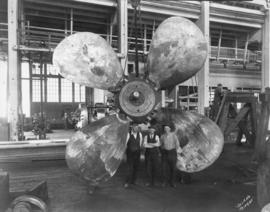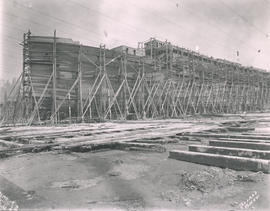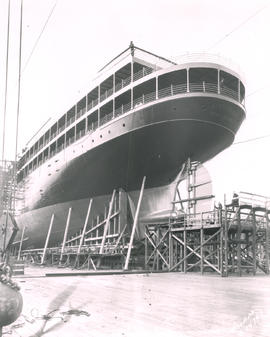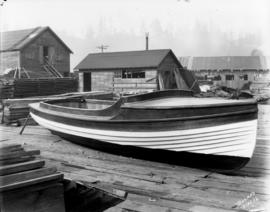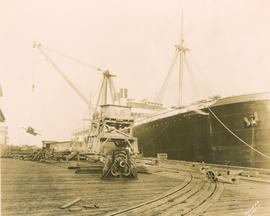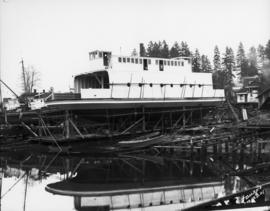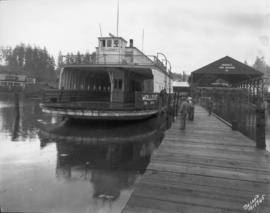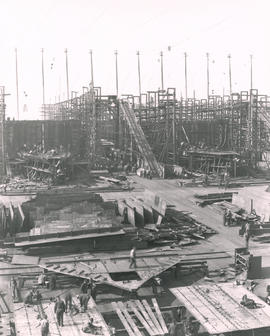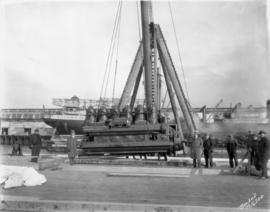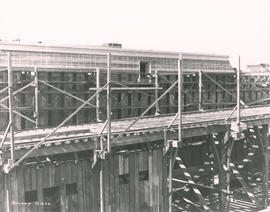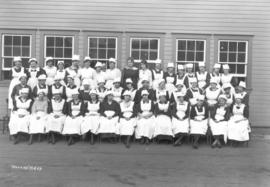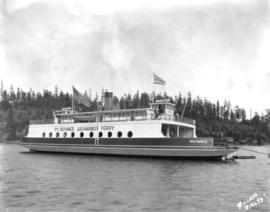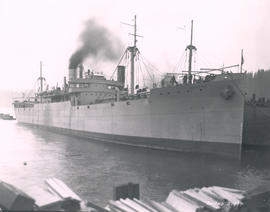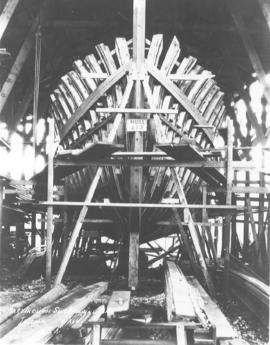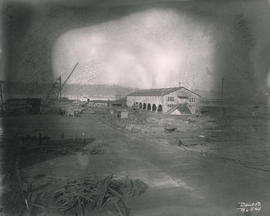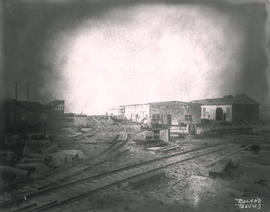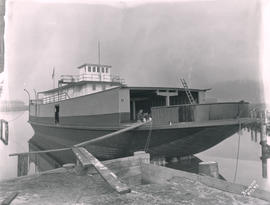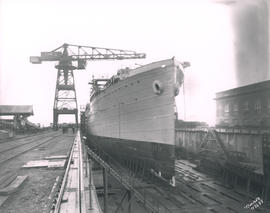- Item
- 1926-11
Part of Marvin Boland Photographs
In November of 1926, the workmen at Skansie Shipbuilding Company posed with the two ferries that they were building in their ways in Gig Harbor. The smaller ferry boat at the left, the "City of Steilacoom", was nearing completion. The larger boat was being built for the Tacoma-Gig Harbor run and would carry up to 75 cars. A larger ways had been built to accommodate the increased size of the ferry. It was scheduled to be launched between February 15 and March 15 and to be completed by April 15. The "City of Steilacoom" was the 12th boat finished by Skansie's since the first of the year. In 1926, the Skansie yard employed 36 workmen. (TNT 11/19/1926, pg. 10) BU 13893, Boland # B15944;
Ferries--1920-1930; Skansies Shipbuilding Co. (Gig Harbor); Boat & ship industry--Gig Harbor;

